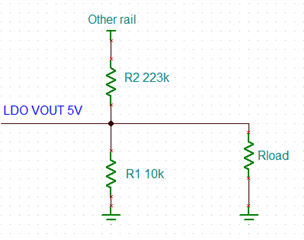This is a somewhat generic question but this is a device that I am evaluating.
In my application the output of the TPS7A19 is accessible to the user and may be shorted out, and that short circuit may be left in place indefinitely. This would cause the regulator to overheat and go into thermal shutdown, where it would cool off, re-enable, and heat up again, and this cycle may go on as long as the system is powered and the short circuit remains.
I know that this is a Bad Thing, but I am trying to understand the expected MTTF or failure rate from this situation. My question is whether the FITs rate, derated for 175°C (the thermal shutdown threshold) is applicable in this situation. Using the FITs number, I can propose that, say, 10,000 units are operating in this situation, for 24 hours a day and 365 days. That's a total of 10000 x 24 x 365 = 87,600,000 device hours. The MTBF/FIT estimator gives me 0.2 for this part, and the derating tool (temperature change FIT) gives me a FIT of 2590 at 175°C (at 1.0 eV). Given my device hours, that works out to 87600000 x 2590 / (10^9) = 226 failures over the course of a year.
Is this a valid calculation? Most datasheets point out that the device should not rely on the thermal protection and this datasheet says that "Continuously running the TPS7A19 device into thermal shutdown degrades device reliability". But the datasheet does not quantify what that means. Is my usage of the FITs data a valid way to determine the failure rate of "continuously running the TPS7A19 device into thermal shutdown"? The datasheet seems to imply that the part will rapidly degrade and fail. But the FITs calculation implies that, out of 10,000 units, maybe less than 3% would actually fail over the course of an entire year spent at the thermal limit.
This is not to imply that a 3% annual failure rate is acceptable. This long-term short-circuit scenario will likely be very uncommon. But I am just trying to figure out if this situation would cause a TPS7A19 to fail very quickly, or perhaps not really at all.


